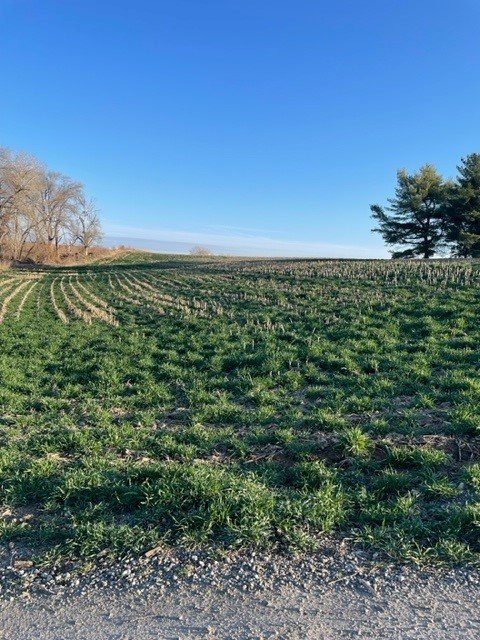SWOF Farmer Spotlight: Bailey Family Farm
As we celebrate National Ag Week, the Soil and Water Outcomes Fund (SWOF) would like to highlight the work of the Bailey Family Farm in northwest Missouri. BJ Bailey started farming in 1977. He farms with his brother, Bert, and son, Bret. They have a corn and bean rotation and a cow calf operation. Hear from BJ and Bret below to learn how they are improving their soil health and preserving their acres for the next generation through conservation practices and the help of SWOF.
BJ Bailey stands in one of his fields of rye with his granddaughter.
“If you can take any steps to help keep the soil where it’s supposed to be and keep it healthy at the same time, that’s a win all the way around. We hope all these efforts will make the farm more profitable in the future for the next generation.”
- Bret Bailey, participating SWOF farmer
Tell us a bit about what it’s like to work with SWOF? What prompted you to get involved?
We've done cover crops for a while here and there, but the main draw was that we were able to enroll all of our acres. And the payment sure does help. Without that help, I’m not sure that we’d do it, or maybe not as much.
And it's been really good to work with SWOF. Joe and Amanda will come to visit and meet with you. They lay it all out for you and make it as simple as can be, which is the way it needs to be. SWOF makes it easy to understand, easy for you to make it work on your acres, and not have any problems. Any time I’ve had a question, I just call you up and I have an answer.
Cover crops growing after no-till corn in one of the Bailey’s fields in northwest Missouri.
You’ve been in our program as an enrolled farmer for a few years now. How have these conservation practices affected the health and productivity of your acres?
Soil conservation is very important on our farm and the use of cover crops is helping. Our soil health is better. It’s helped raise our organic matter in the soil, and it’s definitely helped with erosion control. We’re getting more roots in the ground to hold the soil. We also get the benefit of some weed pressure control too. If you get a good enough stand, it’ll hold the weeds back. And that does help.
It also helps hold moisture. One year, the covers kind of got away from us with just the way the year fell. It was wet and we never could get it killed. Finally, we sprayed it and were able to plant two or three days later, and it really laid down. It made a mat all summer long that helped keep the moisture in and the weeds down. So, it’s worked pretty slick.
Cover crops growing after no-till corn in one of the Bailey’s fields in northwest Missouri.
With several family generations involved on the farm, do you view these efforts in conservation as an investment in securing the legacy of your farm for the next generation?
Yes, we’re always trying to keep it better than we found it, make it better. We’ve tried to add terraces, and tile, and buffer strips where they need to be. If you can take any steps to help keep the soil where it’s supposed to be and keep it healthy at the same time, that’s a win all the way around. We hope all these efforts will make the farm more profitable in the future for the next generation.
Enrollment in the Soil and Water Outcomes Fund is open for 2024. By enrolling your acres in our program, you’ll receive agronomic support and earn financial incentives for the environmental outcomes generated from your on-farm conservation efforts. Get started today by signing up for a free estimate!



